Racocetra coralloidea
(reference accession CA260)
Whole Spores | |
|---|---|
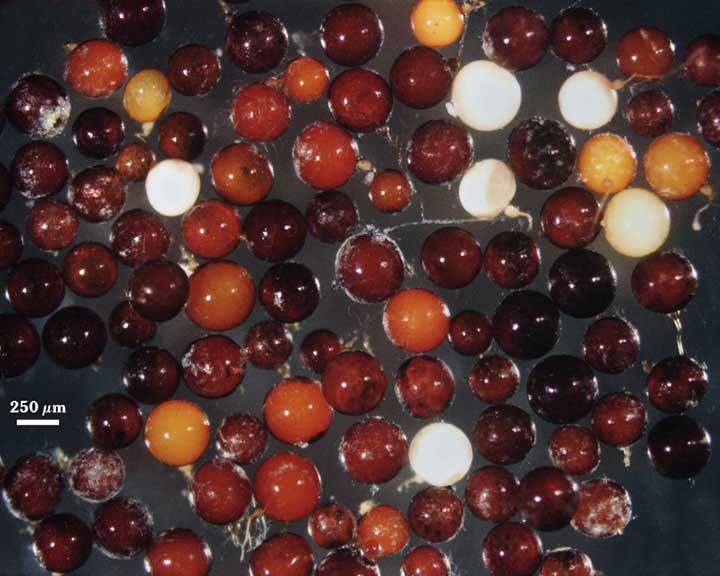 |  |
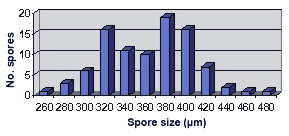 COLOR: Orange-red (0-50-20-0) to dark red brown (20-80-50-10), with the latter most common in a population of healthy spores.
COLOR: Orange-red (0-50-20-0) to dark red brown (20-80-50-10), with the latter most common in a population of healthy spores.
SHAPE: Globose to subglobose
SIZE DISTRIBUTION: 260-480 µm, mean = 362 µm (n = 93)
Subcellular Structure of Spores
SPORE WALL: Two layers (L1 and L2) that are adherent that in juvenile spores are of equal thickness, with the laminate layer thickening as the spore wall is differentiated.
L1: An outer permanent rigid layer, dark brown (40-80-80-0), with surface ornamentations consisting of flattened warts with angular margins (most 2-12 µm wide x 1-3 µm high).
L2: A layer consisting of brown to dark red-brown (20-60-60-0 to 40-80-100-0) sublayers (or laminae) that increase in number with thickness; 6.5-10.5 µm (mean of 8.9 µm) thick in mature spores.
GERMINAL WALLS: One flexible hyaline inner wall (gw1) formed independent of the spore wall and subtending hypha, with two adherent layers.
GW1: Two hyaline layers (L1 and L2) that in field-collected spores are so adherent that they appear as one layer (the condition of type specimens used to describe the species). L1: A thin layer less than 0.5 µm thick and thus difficult to resolve without differential interference optics. No reaction in Melzer’s reagent. In fresh spores from pot cultures, the outer layer sometimes separates in small folds from parts of the wall giving it a blistered appearance. L2: A slightly thicker layer, 0.6-1.2 µm thick. No reaction in Melzer’s reagent.
Subtending Hypha
WIDTH OF SPOROGENOUS CELL: 41-62 µm (mean = 52 µm).
SPOROGENOUS CELL WALL: Two layers (L1 and L2) probably are present (continuous with the two layers of the spore wall), but only L2 is readily discernible at the level of the compound microscope.
L2: Yellow-brown in color (0-20-80-5), 4-6.5 µm thick near the spore and then thinning to1.8-3.2 µm beyond the sporogenous cell.
OCCLUSION: Closure by a plug concolorous with the laminate layer of the spore wall.
Germination
COLOR: Pale brown (0-20-50-10).
SHAPE: Oblong, with length approximately 1.5 times that of the width. Position of the shield is on gw1.
Auxiliary Cells
Cells in aggregates of 5-13 (mean = 8), subglobose, ovoid to clavate, borne on coiled hyaline hyphae, thin-walled (< 1 µm thick), pale yellow (0-0-10-0) in transmitted light, each cell with tuberculate surface, with swellings 1-5 µm high and 3-10 m wide.
Mycorrhizae
Extraradical hyphae of two morphological types: one wide (3-7 µm) and the other thinner (1.5-2.0 µm). The former usually is the infective hyphae at entry points and forms knobby swellings there and near auxiliary cells. Intraradical arbuscules and hyphae consistently stain darkly in roots treated with trypan blue. Arbuscular hyphae branch to form many fine tips from a swollen basal hypha. Intraradical hyphae 3-9 µm wide, with knobs, projections and swollen areas (up to 12 µm wide), and usually densely coiled near entry points and in outer cortical cells.
Notes
Immature spores are white, then turning bright orange in an intermediate juvenile stage (prior to complete differentiation of the spore wall). Ornamentations are fully differentiated at this stage, before many sublayers have formed in the laminate layer. Both in pot cultures and in the field, a large proportion of spores extracted are parasitized and will not germinate. In field-collected spores, the spore wall surface (L1) often has tracks or fissures created by microorganisms or microfauna. Increased sensitivity of spores of R. corralloidea to microbial deterioration reduces storage length to less than six months.
The images below can be uploaded into your browser by clicking on the thumbnail or can be downloaded to your computer by clicking on the link below each image. Please do not use these images for other than personal use without expressed permission from INVAM.
High Resolution Images | |
|---|---|
 | 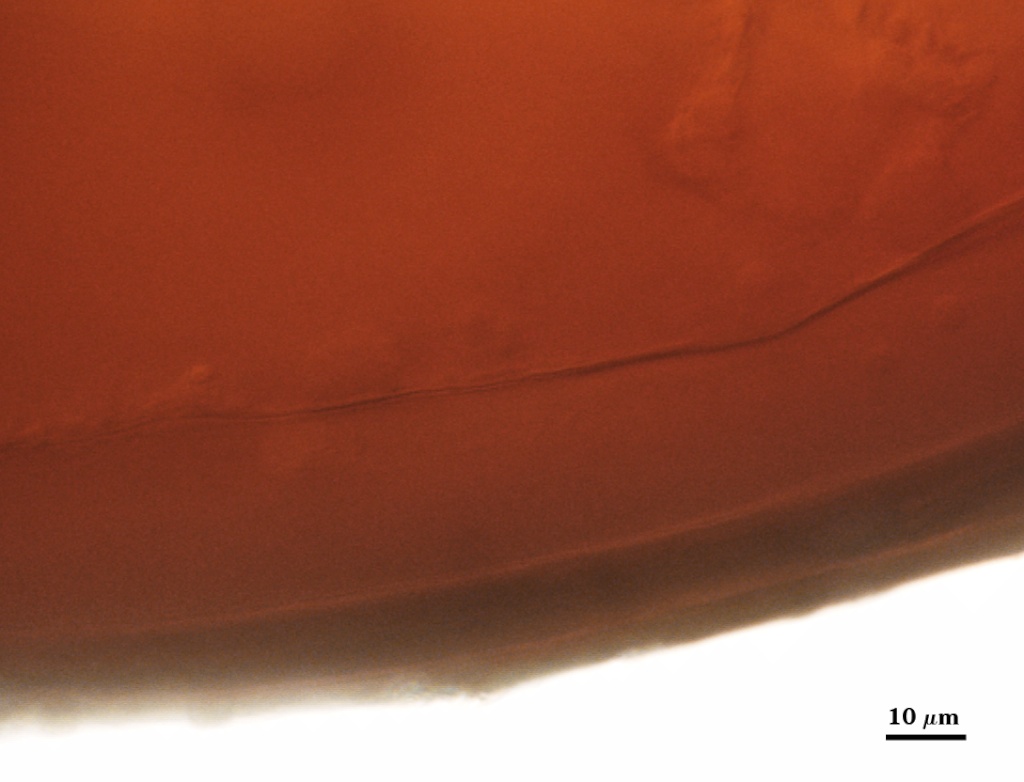 |
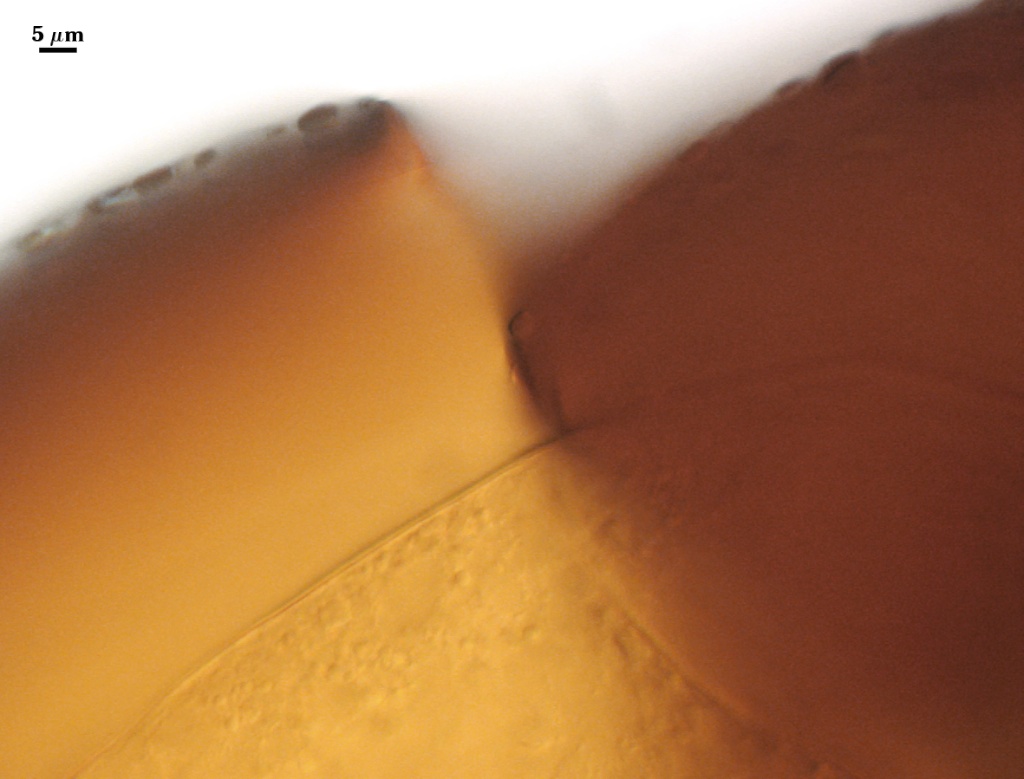 |  |
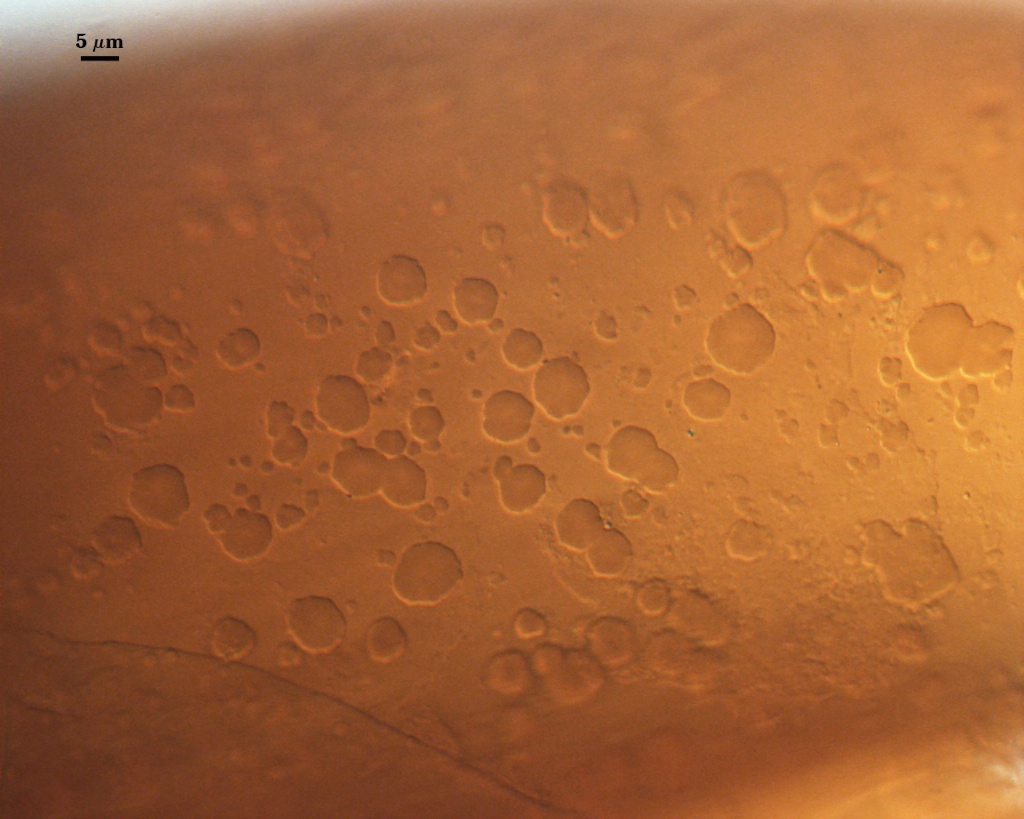 | |
